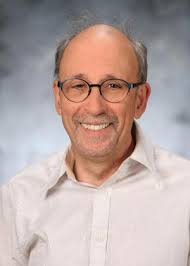
材料・デバイス研究
Mattanjah de Vries
特任教授
Photochemistry Gas phase chemistry Mass spectrometry Origin of life Cultural heritage Prebiotic chemistry
略歴
Dr. de Vries received his Ph.D. in Chemical Physics at the University of Amsterdam in 1980. After spending four years at UCSB as a Research Associate, he became a Research Staff member at the IBM Almaden Research Laboratory. In 1997 Dr. de Vries became an Associate Professor in the Department of Chemistry, Hebrew University of Jerusalem. In September 2000, Dr. de Vries joined The UCSB Department of Chemistry and Biochemistry as a Professor of Physical Chemistry. While at IBM he won three awards for outstanding innovation and technical achievement. He was elected Humboldt Fellow (2003), AAAS Fellow (2008), and RSC fellow (2018). He became distinguished professor at UCSB in 2018.
WRHIへの期待
Both the Tokyo Tech and the UCSB group aim to study fundamental properties in molecules, isolated in the gas phase. They use different but complimentary techniques. This combination may be expected to lead to new understanding of basic photochemistry in biological building blocks. Furthermore, I look forward to interacting with many colleagues across Japan.
研究プロジェクト
-
Gas phase techniques enable the study of isolated molecules, free of interactions. A major thrust is the laser spectroscopy of isolated biomolecular building blocks. These include single DNA bases and amino acids, as well as their clusters with each other and with water molecules. These studies touch on questions such as: “What is the chemical origin of life?” What makes a peptide fold?”, “What cause pigments in works of art to fade?’, or “How is the machinery of life protected from UV radiative damage?” The UCSB lab studies the underlying photochemical processes in neutral molecules. The Fujii group at Tokyo Tech will study the same molecular systems in their ionic form. The combination of these two complementary approaches may be expected to deepen our insights in the fundamental chemistry of light interacting with matter.
| 2019- |
Specially Appointed Professor. Institute of Innovative Research. Tokyo Institute of Technology |
|---|---|
| 2017- |
Distinguished Professor. Department of Chemistry and Biochemistry. University of California, Santa Barbara |
| 2000-2017 |
Professor. Department of Chemistry and Biochemistry. University of California, Santa Barbara |
| 1997-2000 |
Associate Professor. Department of Chemistry. Hebrew University of Jerusalem |
| 1985-1996 |
Research Staff member. IBM Almaden Research Laboratory |
| 1984-1985 |
Lecturer. Department of Chemistry. University of Maryland |
| 1980-1984 |
Research Associate. Department of Chemistry. University of California |
| 1975-1980 |
Research fellow. FOM Institute for Atomic and Molecular Physics, Amsterdam, the Netherlands |
| 1973-1975 |
Graduate Research. Accelerator facility, Weizmann Institute, Rechovot, Israel |
| 2018 |
Fellow Royal Society of Chemistry |
|---|---|
| 2008 |
Fellow AAAS |
| 2003 |
Humbolt Research fellowship for lifetime achievement |
| 2018 |
How Nature covers its bases. Samuel Boldissar and Mattanjah S. de Vries. DOI: 10.1039/C8CP01236A . Phys. Chem. Chem. Phys. 20, 9701-9716 |
|---|---|
| 2016 |
Life in the Light: Nucleic Acid Photoproperties as a Legacy of Chemical Evolution. Ashley A. Beckstead, Yuyuan Zhang, Mattanjah de Vries, and Bern Kohler, PCCP, 18, 24228 – 24238 |
| 2014 |
Excited state dynamics of DNA bases Karl Kleinermanns, Dana Nachtigallová, and Mattanjah S. de Vries, International Reviews in Physical Chemistry, , 32, 308-342 |
| 2004 |
Pairing of Isolated Nucleic-Acid Bases in the Absence of the DNA backbone. Eyal Nir; Karl Kleinermanns; and Mattanjah S. de Vries, NATURE, 408, 949-951 |
| 1993 |
Cobalt Catalyzed Growth of Carbon Nanotubes with Single-Atomic-Layer Walls D.S. Bethune, C-H. Kiang, M.S. de Vries, G. Gorman, R. Savoy, J. Vazquez, and R. Beyers. NATURE, 363, 605 |
